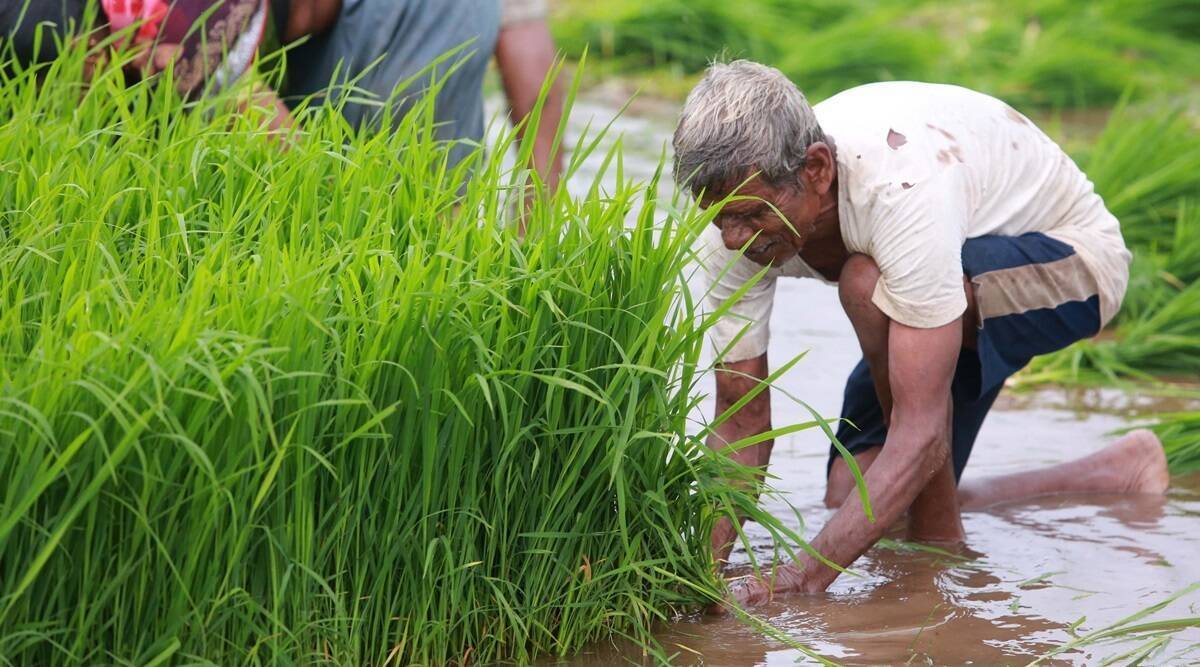
There is a new cause for concern, despite the fact that the total area planted with rice has decreased by almost 3.1 million hectares (mh) this Kharif cropping season compared to last year, mostly in the monsoon-deficient states of Uttar Pradesh, Bihar, Jharkhand, and West Bengal. And it's coming from Punjab and Haryana, the nation's Green Revolution bowl.
Numerous farmers in the two states, as well as those in the nearby high-yielding Terai plains of Uttarakhand and western UP, have reported a mystery "dwarfing" disease of paddy that agricultural scientists are still trying to identify over the past week or so. The disease causes paddy plants to grow shorter; infected fields also contain plants that grow taller and more regularly.
Between June 22 and June 25, Rajinder Singh transplanted the paddy varieties "PR-121" and "PR-113" on his 9-acre holding. "In the first 30-35 days, all plants grew in an identical manner. However, after that, some stopped growing while the others carried on. My PR-113 fields (3.5 acres) have about 40% of plants that haven't grown at all after 35 days, and my PR-121 fields (5.5 acres) have about 70% of those plants, according to this 26-year-old from Darsopur village in the Pathankot district and tehsil of Punjab.
Basmati paddy grower Pritam Hanjra claims to have discovered the issue on July 4 in a neighbouring farmer's 35-acre field in the Madlauda tehsil of Haryana's Panipat district. Following that, he informed researchers at the nearby Krishi Vigyan Kendra and the Punjab Agricultural University (PAU), Ludhiana.
On May 20, "that person" had directly sown Pusa Basmati-1509. I visited his field on July 4 and found up to 10% of the plants there to be dwarfed. Similar results were observed with the Pusa Basmati-6 variety, which I transplanted on June 20: by the end of July, 7-8% of the plants had stopped growing.
Hanjra claims that basmati paddy plants typically reach a height of 70 to 75 cm after transplanting or direct sowing, compared to non-basmati varieties that typically reach a height of 50 to 55 cm: "The stunted plants in the infected fields have 33 to 60% of what should be their normal height after one month."
Notably, scientists still don't know how to treat the mysterious illness. "A zinc deficiency was initially thought to be the cause. But if that were the reason, all the plants in the field with that deficiency would have been affected. Stunting is only present in a few plants in this field," Hanjra noted.
Officials from the Punjab Agriculture Department gave Rajinder Singh a similar diagnosis of zinc deficiency: "They told me to spray 0.5 kg of zinc and 2.5 kg urea per acre after diluting with water. I also applied plant growth regulators while doing that. But instead of growing normally again, the stunted plants have begun to look pale. They are unable to support any daana (grain) or baali (flower panicles).
The dwarfing of paddy has been reported from numerous districts, including Pathankot, Hoshiarpur, Nawanshahr, Ropar, Fatehgarh Sahib, Mohali, Patiala, and portions of Ludhiana, according to Gurvinder Singh, director of agriculture for the Punjab government. In addition, almost all varieties have experienced some level of affliction.
As opposed to being directly seeded, it is more noticeable in fields where paddy has been transplanted (in flooded conditions after being raised in nurseries). Additionally, it appears that more plants in non-basmati paddy fields than in basmati paddy fields are stunted. In his Pusa-44 non-basmati fields, Nirmal Singh, who farms 50 acres of joint-family land in Narmana village of Patiala district's Nabha tehsil, has reported 25% stunted plants and 10% for Pusa Basmati-1509.
Meanwhile, to assess the severity of dwarfing and gather plant samples, a team of researchers from the Indian Agricultural Research Institute visited farmers' fields in Punjab and Haryana. "These have been sent for DNA sequencing, and the presence of mycoplasma (a bacterium without a cell wall), viruses, or any other likely cause of the problem, including nutritional deficiency, is being examined. A.K. Singh, director of the prestigious institute in New Delhi who oversaw the team, told The Indian Express, "We are awaiting the results.
A 10-person scientific committee has also been assembled by PAU to identify the disease. A top scientist at the university confirmed, "They have collected field samples and are checking for any match with the available molecular markers of known diseases."
All of this occurs despite the fact that, as of August 18, the total area of rice planted across all of India during this kharif season was only 34.37 mh, down from 37.46 mh during the same period last year. With a yield of 2.7 tonnes per hectare, rice, it results in a loss of production of almost 8.5 million tonnes. In Punjab and Haryana, where non-basmati yields average 4-4.5 tonnes per hectare, all eyes are currently focused. The mysterious "dwarfing" disease has not yet been linked to any effects, if any.
















